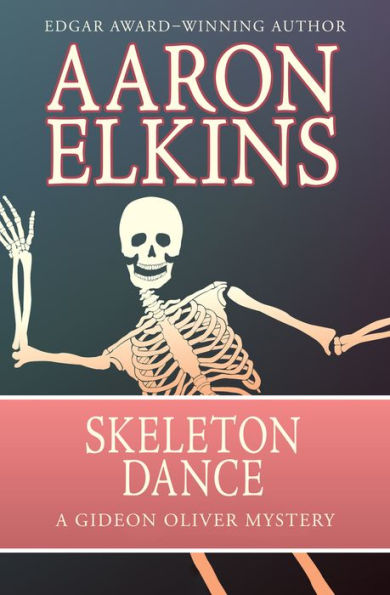Read an Excerpt
Chapter One
Once, the thing in the cave had been a man, but that had been long ago. As the years passed it had lain buried in the rich, red-brown humus, slowly decomposing, its nourishing organic wastes feeding successive generations offlatworms and beetle grubs. Then, as the soil settled and fissured, the blowfly larvae had come, followed inevitably by streams of ants and earwigs, and, later still, by the busy rodents of the valley: wood rats, field mice, and squirrels. Over time the protective covering of soil had been largely scratched and worn away, allowing most of the bones to be pulled apart and many of them hustled off to forest dens and lairs, there to be gnawed at leisure.
But now the sounds of deep-chested snuffling and of strong claws scrabblingjust beyond the entrance indicated that something more formidable than field mice or squirrels had found its way to the cave. A moment later a squarish, black head with glistening, excited eyes and a mouth filled with shearing, crushing teeth thrust itself into the entrance, low to the ground. The creature went for one of the largest bones, a partially buried femur, worrying it free of the soil with teeth and claws. It bent its head sideways to get its powerful jaws around the narrow part of the shaft, just below the lesser trochanter, where long ago the Quadriceps femoris had attached, the massive set Of muscles that had once taken the living man striding upright along the valley paths.
With a final jerk of its head to set the bone more firmly in its mouth, the creature turned back to the opening and loped out of the dimness and into the sun. The next day it was back, and the next, and thenext after that....
Dr. Emile Grize, the longtime holder of the Chair of Paleopathology at the Institut de Prehistoire, scanned the meager assemblage of bones with a sniff of disapproval. "You've brought me very little to work with."
"It's all that we have," said Auguste Marielle, prefect of police of the village of Les Eyzies. He said it with a self-deprecating smile, but in truth he didn't care for Grize's attitude at all, for the implication that Marielle himself, or his department, was somehow at fault. What was he supposed to do, bring bones that didn't exist?
"They look like something my dog might bring home," Grize added, in case Marielle had failed to grasp the point.
"That is the case, in fact," said Marielle. "Ha, ha, you've hit the nail on the head there, Professor."
The bones, he explained, with his plump shoulders jiggling in a show of good humor, were from an untended patch of weeds and dirt behind the cottage of a stonemason and his wife, where they had been buried by the family dog, which had been returning with them from its solitary outings for several days. The mason, a reclusive malcontent well known in the village, had belatedly notified the police at the urging of his uneasy wife, and the bones had been dug out of the Peyrauds' backyard by Marielle's people only an hour or two earlier. The dog had watched the unearthing of his treasures with indignation and amazement, and Peyraud himself, beginning to regret that he had done his duty in contacting the police, had threatened legal action unless he was compensated for the ruin of his "vegetable garden," whereupon Marielle had told him in no uncertain terms.
"Yes, very interesting," said Grize. "Now this may take some time. You can wait here if you wish, or I can have you notified."
Marielle chose to wait, drinking wretched coffee from a plastic cup and twiddling his thumbs while Grize fingered the materials, leaning over them like a monkey lost in the mysteries of a length of knotted string or a pair of spectacles. And at last, at long last, he straightened up and delivered his pronouncement.
"Yes, they're human, there's no question about that. Right ulna, right femur, right fibula. . ." He arranged each as he named it, so they lay in a perfect row. ". . . right first and third metacarpals, rib, rib, partial navicular. . ."
Marielle put down his watery coffee while Grize rambled on. If there was no question about it, he thought sourly, what took you all morning to tell me?
"Except for these tiny ones, of course," the paleopathologist concluded, "which I believe to be Apodemus sylvaticus."
"Apo ... Apo ... ?"
"Mouse bones. You see, here is a tibia, here a little scapula, here a—"
"But these others are human-you're positive?"
Grize's chin came up. "If you're not satisfied, you can always get another opinion."
"No, no, sir, I assure you, I'm satisfied extremely satisfied."
"Dr. Beaupierre, perhaps, or Dr. Monort might be-"
"No, Professor, believeme, if you say these bones are human, that's certainly good enough for me, oh, more than good enough."
"Umf," said Dr. Grize.
That's the way it was with Grize, Marielle thought, you were always walking on eggshells with him; Marielle had dealt with him before and had known what to expect. He was a little man, that was his problem. Like Napoleon, it made him quarrelsome. And since he was unmarried, he wasn't used to losing arguments every day, which didn't help either; no doubt it also explained why he was so used to hearing himself talk. Difficult as he might be, however, Grize was a scientist of repute, and he knew his bones.
"And is it possible to say anything about the manner of death?" Marielle asked.




